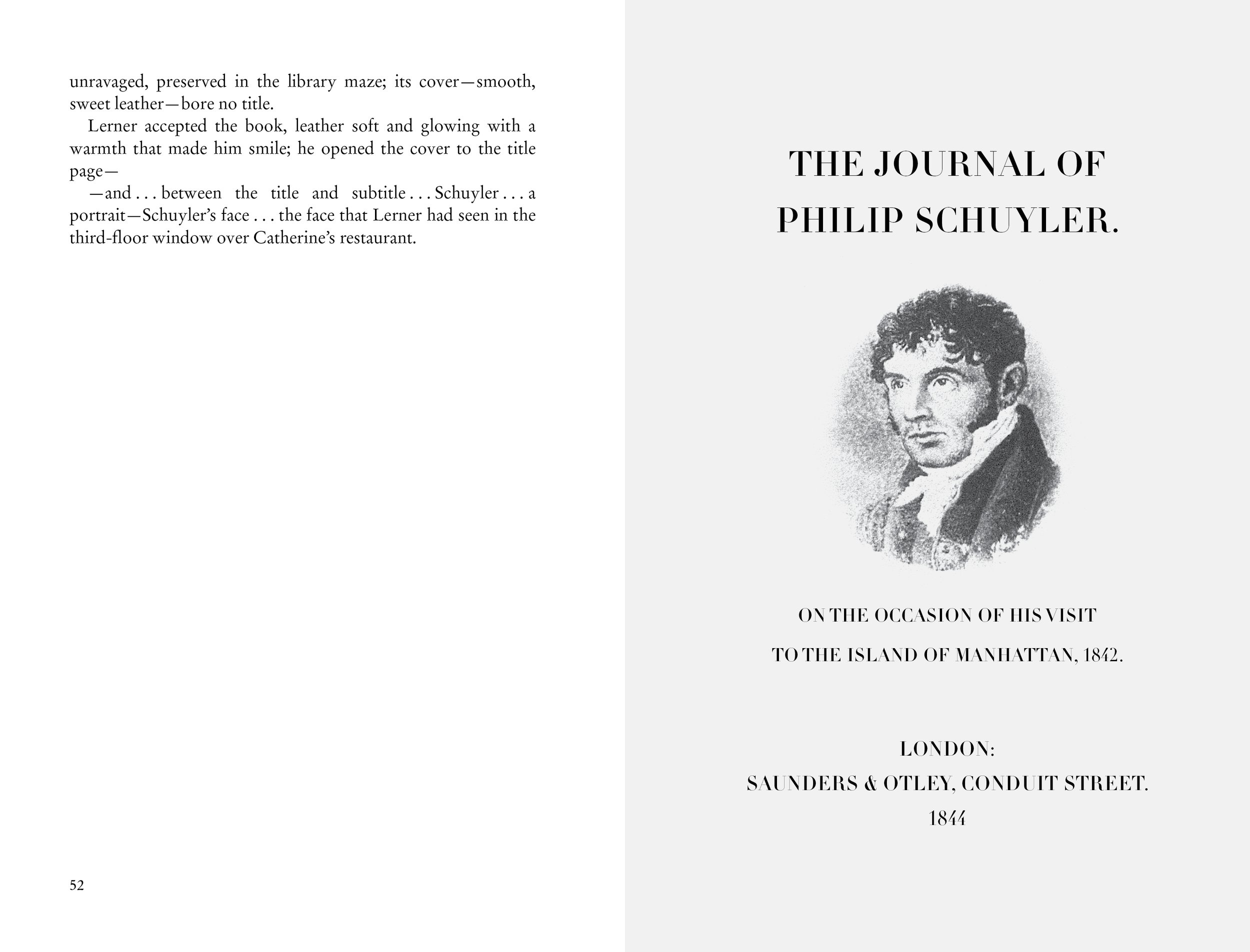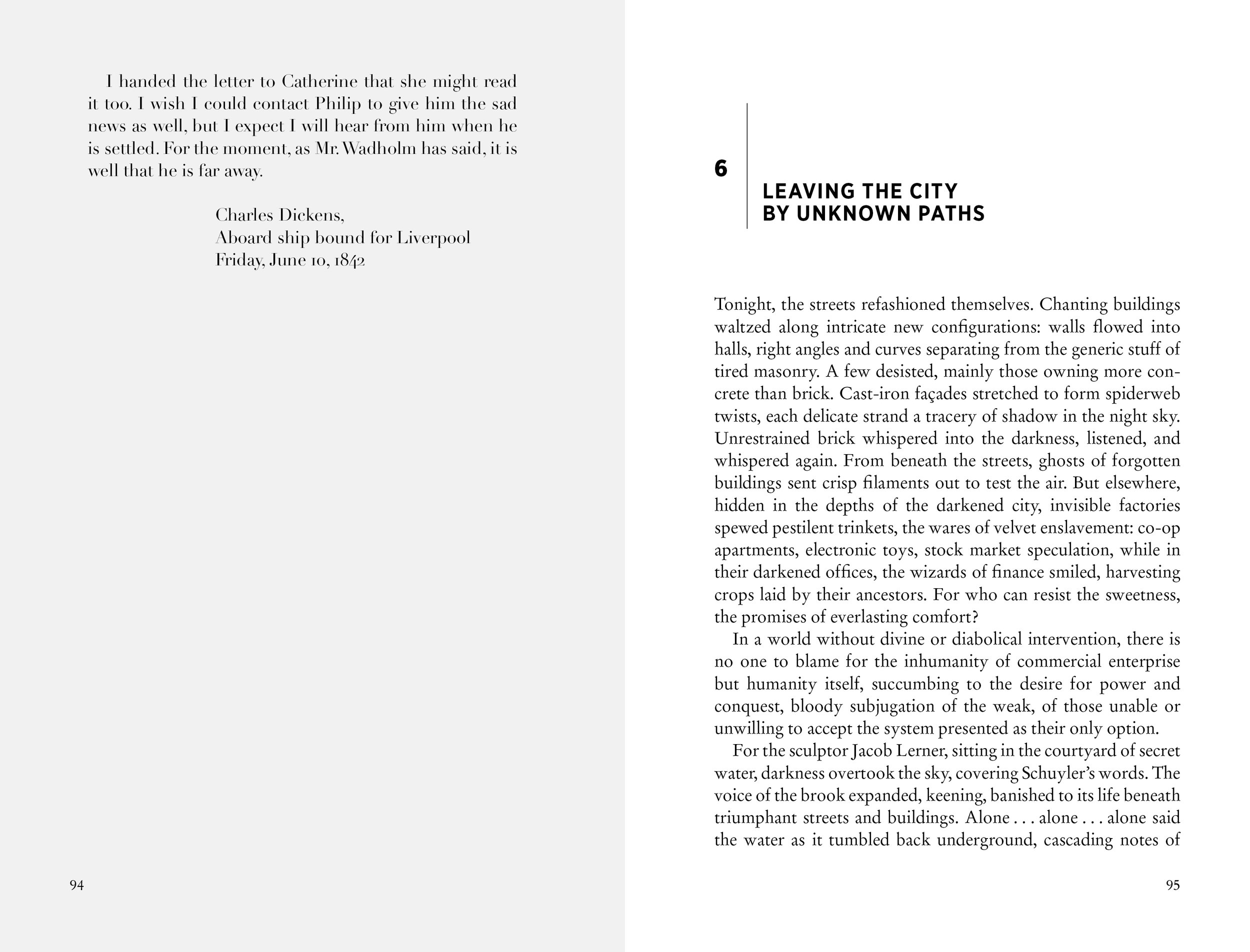007 | The Painting and the City | ROBERT FREEMAN WEXLER
robert freeman wexler
At a mundane Manhattan party in the first summer of the twenty-first century, sculptor Jacob Lerner catches sight of an old painting and is transfixed. Who is the woman it portrays so intently? And what accounts for the malevolent gaze of the figure lurking behind her? Striving to produce art that meets his high standards, without surrender to the demands of the marketplace, Lerner is also driven to learn about the haunting portrait and its creator, Philip Schuyler. His discovery of Schuyler’s journal reveals the sinister forces that coerced the artist as he fulfilled his commission in 1840s New York, and sharpens Lerner’s own conflict with those forces that still control the modern city.
Propelled in his quest by a glass marionette with unusual powers, Lerner finds himself slipping back and forth in time between the present-day city and Schuyler’s Manhattan, before the island’s pastures and streams were buried under concrete. His obsession comes to dominate his own art: he produces a pair of works, one that recovers the promise of the preindustrial island; the other a visualization of the modern metropolis, corrupted by greed and entrenched interests, and its possible destruction. With his vision of a city in ruins, open to regeneration through nature and art, Lerner arrives at a cataclysmic conclusion.
“Wexler’s control of his prose, the careful delineation between characters, the ease with dialogue, the purposeful pacing (deliberate but not slow), the precise description of the setting, are all in the service of a sudden, sharp shock, a bizarre interface within the real world. Don’t call it North American Magic Realism—call it North American Surrealism.” JEFF VANDERMEER
An unusual, haunting tale from a distinctive new voice.” LISA TUTTLE, SUNDAY TIMES
“informed by an artist’s eye and driven by its fantastic elements, this complex, enthralling novel is concerned with relations between art and commerce, and nature and commerce; the importance of the past; the everyday oppression of capitalism; and how art may shape history.” BOOKLIST
Available from:





